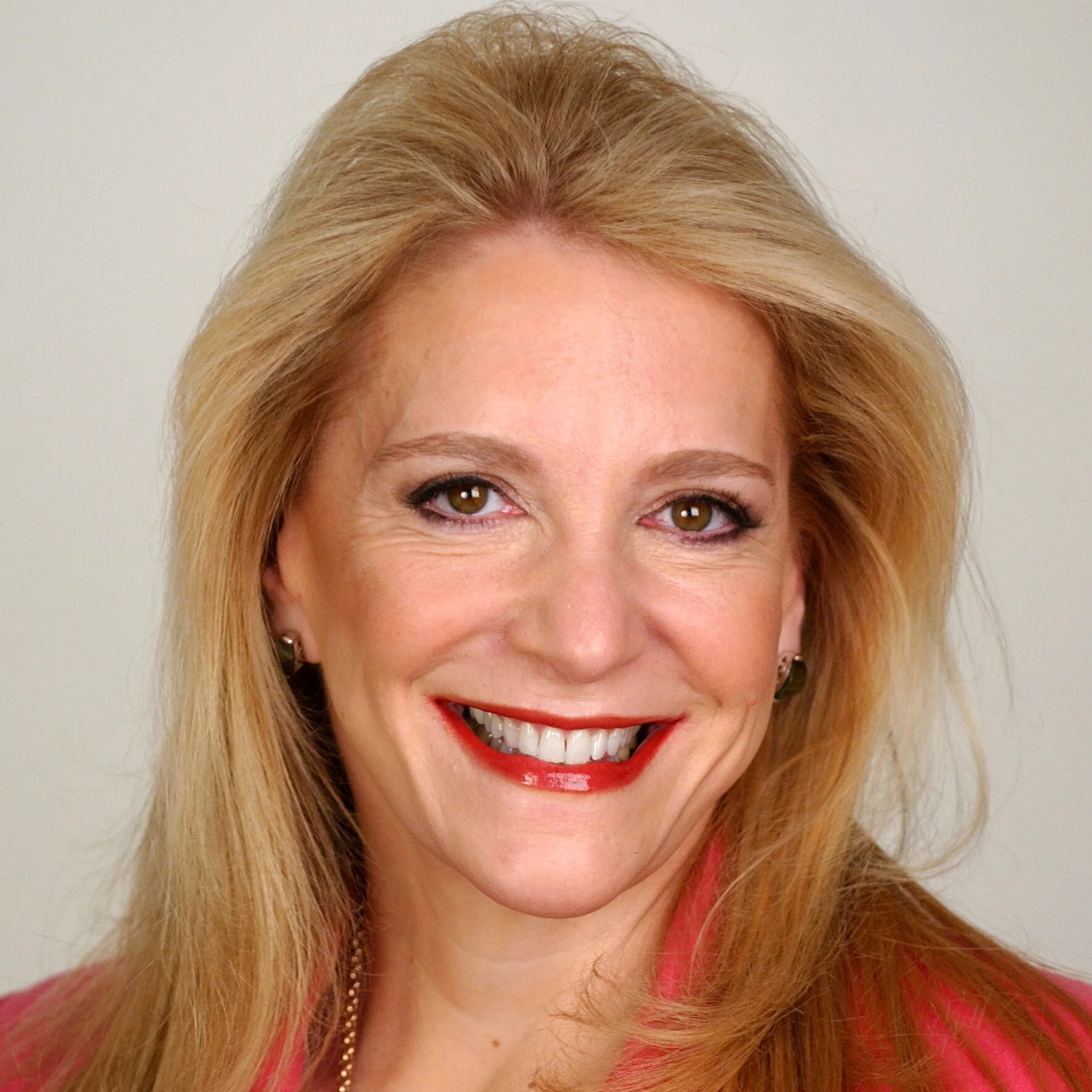Being a Woman Cost Me $2 Million, But Ruth Bader Ginsburg Stood Up for Me
Thanks to pioneers like Ruth Bader Ginsburg, women have come a long way in this country … or have we? A look at the progress, the continuing struggles and my tips for women trying to get ahead today.


Supreme Court Justice Ruth Bader Ginsburg was the personification of women’s and people’s rights to have a seat at the table. She taught the court that, “A gender line … helps to keep women not on a pedestal, but in a cage.”
She was an inspiration to me and so many others. I wore my RGB socks proudly, heard her speak live, saw her on a plane and went running up to her and she was way too gracious, and even had a bracelet made that I wear with a charm that reads LIVE ORGAN DONOR FOR RBG.
RBG changed so many rights for men and women. One really hit home for me: a woman’s right to get credit. I applied for my first credit card in the 1970s. I was a bank executive, yet I was not entitled to get credit on my own name. Instead, the card was issued in my husband’s name (which was not the same as mine), and I was told to carry a permission letter from him allowing me to use the card. RBG fought and won to change all of that. Again, “Thank you, RBG.”
From just $107.88 $24.99 for Kiplinger Personal Finance
Become a smarter, better informed investor. Subscribe from just $107.88 $24.99, plus get up to 4 Special Issues

Sign up for Kiplinger’s Free Newsletters
Profit and prosper with the best of expert advice on investing, taxes, retirement, personal finance and more - straight to your e-mail.
Profit and prosper with the best of expert advice - straight to your e-mail.
With her recent death, let’s take a moment to think about how far we have come.
The Gender Wage Gap: My Own Story
RBG fought for ending to the difference in earnings between men and women. Women consistently earn less than men, and the gap is wider for women of color.
If you look at the most recent Census Bureau data from 2018, women earned, on average, 82 cents for every $1 earned by men. Let’s talk about reality: The National Committee on Pay Equity estimates that “over a working lifetime, this wage disparity costs the average American woman and her family an estimated $700,000 to $2 million, impacting Social Security benefits and pensions.”
I experienced this myself when I joined one of the top banks on Wall Street in 1972, long before affirmative action was passed. I was lucky enough to be trained to become one of the few female executives at that time, but I was in for a rude awakening. I started at the same salary as my male counterparts, $11,000 a year. After two weeks, I was called into the office of the head of personnel. She said, “You are a young girl and you are taking the place of a male who has a family to support. We are reducing your salary to $6,500 a year.” I asked her what I could do to earn what the men did and she said, “Graduate first in your credit training course.” I did, but she didn’t raise my salary. When I politely inquired why, she again said that I was taking the place of a man and that I would never earn what they do.
She was a woman of her word … I never did. (In those days, women were earning 61 cents for every dollar a man earned.) When you figure out the lower salary, bonuses and pension, this cost me over $2 million in lost income over my lifetime.
The few women who started to trickle into the corporate world were an enigma. We had no voice. If you opened your mouth, you would most likely be fired. That didn’t help you and it didn’t create change for the next generation to follow. We put our heads down and did our work; and change happened slowly.
You Are What You Wear: Another Personal Story
I commuted into NYC every day from New Jersey for my job. It was a 1½-hour schlep each way. Part of the commute was to trek along the city streets to the bank from the World Trade Center. The streets are a hazard for high heels, and on my meager salary, I couldn’t afford to keep replacing my shoes. So, I decided to keep my heels at work (under my desk) and wear sneakers back and forth to commute.
This was frowned upon and I was told; “You are a bank professional from the time you leave your home in the morning and until you return home at night.” I didn’t heed this warning and was one of the women pictured in an article in the late 1970s talking about women wearing sneakers to and from work. (This was way before the MTA strike in the 1980s when women were shown in their power suits and sneakers walking to work.)
My Advice for Women Today: Live by RBG’s Words
RBG said it best, “Fight for the things that you care about, but do it in a way that will lead others to join you.” You have the right to call out sexism or racism or any other “ism” when you hear it in a meeting. But will you really accomplish your mission to make systemic change?
It’s easy to flare up in outrage, because it is probably justified. But it may backfire, and people rarely hear words that are yelled. RBG also said, “Reacting in anger or annoyance will not advance one’s ability to persuade.”
Maybe follow the words of RBG, and have a private conversation with the offender to say that, “Some participants were taken aback by your comments, I wanted to let you know because I think that it obscured the really important point you were making.” As RBG taught, I tuned out when the sexism rhetoric flew around the room.
I was never paid what the men were paid, but when I left 13 years later, half of my division was composed of women and people of color. I lost the battle; but won the war.
I got through those meetings by entertaining myself by awarding “diving scores” to the men who said insulting things. Remember the old Olympic diving scores, from 1-10, based upon the degree of difficulty? That’s what I’d do. I’d rate the guys and give them a score. As more women joined my team, I clued them into my game. It got us through many meetings.
It’s now more acceptable to have the conversation, but it can still be tricky. I am an Executive in Residence at Columbia Graduate School of Business. Many students have discussed past work issues. I advise my mentees to do what Ginsburg did: Focus on their ultimate goals and convey their concerns in a generative and not a combative manor. Obviously, if the issues are around any form of assault, that answer is clear. We also have Title IX. This protects people from discrimination based on sex in education programs that receive federal financial assistance. With Title IX, one must come forward.
I don’t feel that you are compromising your beliefs; you are approaching it in a way to allow people to hear your point in a non-threatening way. Think of change as happening in baby-steps, when it comes to our personal lives. RBG also said; “Real change, enduring change happens one step at a time.”
Where Do We Go from Here? Up!
The sad truth is that nowhere in the globe is there real gender parity.
- More than 2.5 billion women and girls around the world are affected by discriminatory laws and lack of legal protection.
- 36 countries limit what wives can inherit from their husbands.
- In 18 countries men can prohibit their wives from working.
- On a global basis, at our current rate of progress, it will take 108 years to reach gender parity.
- Only 38 of Fortune 500 companies are headed by women.
- The U.S. is one of only eight countries that does not provide any form of maternity leave.
- Wages in the U.S. have increased from 61 cents on the dollar to 82 cents for women as compared to men from 1970 to 2018.
The words of Michelle Obama ring true: “No country can ever truly flourish if it stifles the potential of its women and deprives itself of the contribution of half its citizens.”
We need to move forward with the goal of real parity, a real seat at the table, a real equal voice. We honor the women who started this quest. It’s easy to be angry that we are still discussing this 100 years later, but as RBG told us; “Don’t be distracted by emotions like anger, envy, resentment. These just zap energy and waste time.”
I only hope that when my granddaughter writes for Kiplinger’s in 20 years, she will be celebrating our new-found gender parity, and that it’s no longer an issue.
Profit and prosper with the best of Kiplinger's advice on investing, taxes, retirement, personal finance and much more. Delivered daily. Enter your email in the box and click Sign Me Up.

Neale Godfrey is a New York Times No. 1 bestselling author of 27 books that empower families (and their kids and grandkids) to take charge of their financial lives. Godfrey started her journey with The Chase Manhattan Bank, joining as one of the first female executives, and later became president of The First Women's Bank and founder of The First Children's Bank. Neale pioneered the topic of "kids and money," which took off after her 13 appearances on The Oprah Winfrey Show.
-
 Nasdaq Sinks 418 Points as Tech Chills: Stock Market Today
Nasdaq Sinks 418 Points as Tech Chills: Stock Market TodayInvestors, traders and speculators are growing cooler to the AI revolution as winter approaches.
-
 23 Last-Minute Gifts That Still Arrive Before Christmas
23 Last-Minute Gifts That Still Arrive Before ChristmasScrambling to cross those last few names off your list? Here are 23 last-minute gifts that you can still get in time for Christmas.
-
 The Rule of Compounding: Why Time Is an Investor's Best Friend
The Rule of Compounding: Why Time Is an Investor's Best FriendDescribed as both a "miracle" and a "wonder," compound interest is simply a function of time.
-
 If You're a U.S. Retiree Living in Portugal, Your Tax Plan Needs a Post-NHR Strategy ASAP
If You're a U.S. Retiree Living in Portugal, Your Tax Plan Needs a Post-NHR Strategy ASAPWhen your 10-year Non-Habitual Resident tax break ends, you could see your tax rate soar. Take steps to plan for this change well before the NHR window closes.
-
 Your Year-End Tax and Estate Planning Review Just Got Urgent
Your Year-End Tax and Estate Planning Review Just Got UrgentChanging tax rules and falling interest rates mean financial planning is more important than ever as 2025 ends. There's still time to make these five key moves.
-
 What Makes This Business So Successful? We Find Out From the Founder's Kids
What Makes This Business So Successful? We Find Out From the Founder's KidsThe children of Morgan Clayton share how their father's wisdom, life experience and caring nature have turned their family business into a respected powerhouse.
-
 I'm a Financial Adviser: The Fed's Rate Cuts Could Have Impacts You Might Not Anticipate
I'm a Financial Adviser: The Fed's Rate Cuts Could Have Impacts You Might Not AnticipateUnderstanding how lower interest rates could impact your wallet can help you determine the right financial moves to make.
-
 Past Performance Is Not Indicative of Your Financial Adviser's Expertise
Past Performance Is Not Indicative of Your Financial Adviser's ExpertiseMany people find a financial adviser by searching online or asking for referrals from friends or family. This can actually end up costing you big-time.
-
 I'm a Financial Planner: If You're Not Doing Roth Conversions, You Need to Read This
I'm a Financial Planner: If You're Not Doing Roth Conversions, You Need to Read ThisRoth conversions and other Roth strategies can be complex, but don't dismiss these tax planning tools outright. They could really work for you and your heirs.
-
 Could Traditional Retirement Expectations Be Killing Us? A Retirement Psychologist Makes the Case
Could Traditional Retirement Expectations Be Killing Us? A Retirement Psychologist Makes the CaseA retirement psychologist makes the case: A fulfilling retirement begins with a blueprint for living, rather than simply the accumulation of a large nest egg.
-
 I'm a Financial Adviser: This Is How You Can Adapt to Social Security Uncertainty
I'm a Financial Adviser: This Is How You Can Adapt to Social Security UncertaintyRather than letting the unknowns make you anxious, focus on building a flexible income strategy that can adapt to possible future Social Security changes.